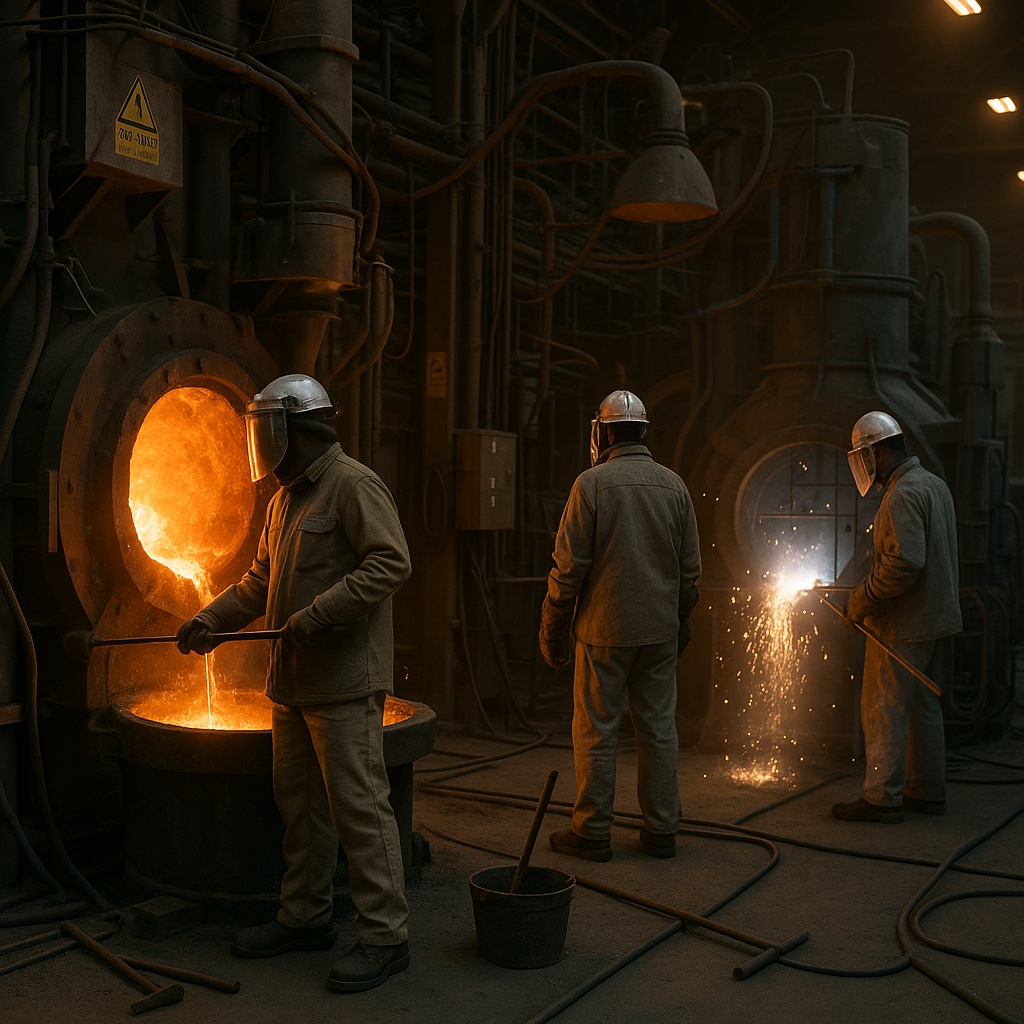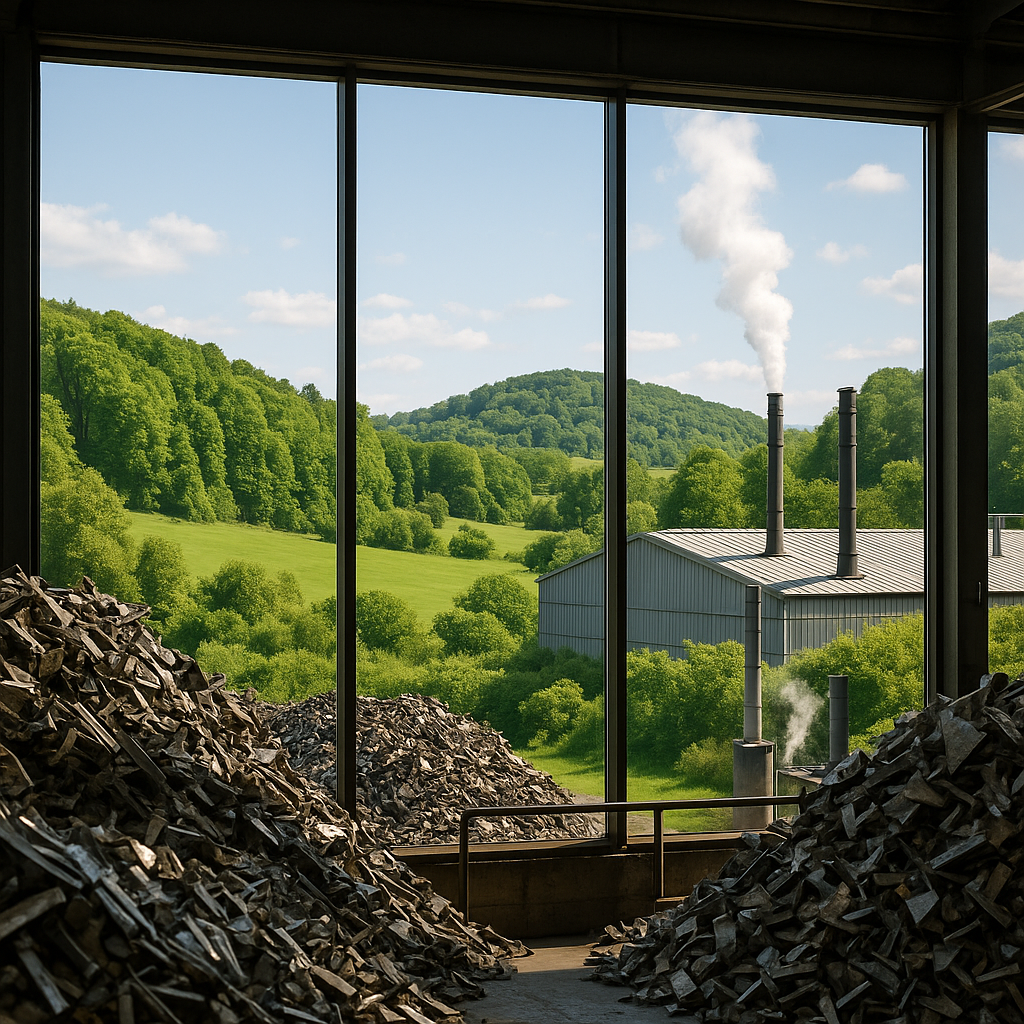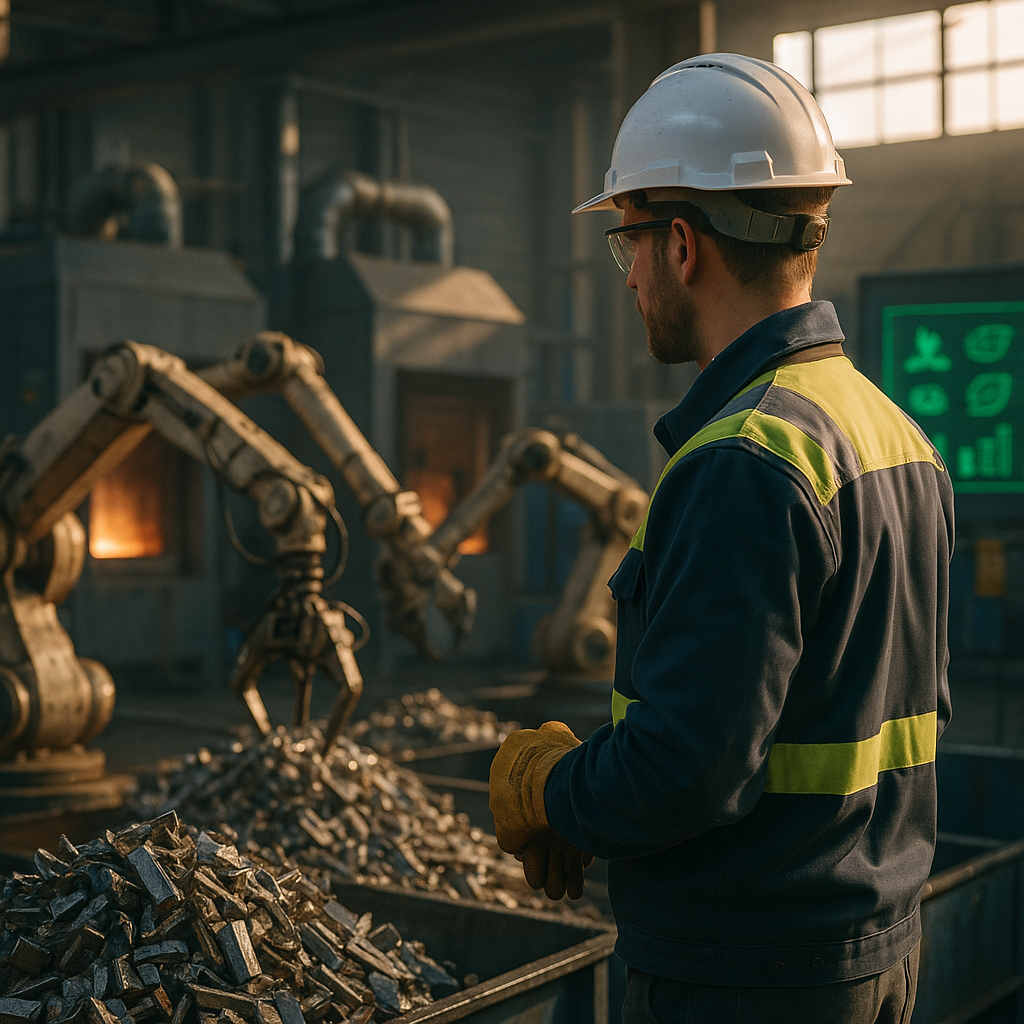5901 Botham Jean Blvd, Dallas, TX 75215
Furnace Metal Recycling: Types of Furnaces, Melting Process, Benefits, and Future Trends
October 2, 2025Metal recycling is a crucial tool for environmental conservation, and at its core is furnace metal recycling. This specialized technique involves melting scrap metal at high temperatures to transform waste into valuable raw materials.
Furnace metal recycling takes discarded metal items from homes, construction sites, and manufacturing facilities and revitalizes them. The process includes collecting, sorting, and processing scrap metal before melting it in specialized furnaces designed for different metal types. These furnaces reach temperatures sufficient to liquify metals, allowing impurities to be removed.
This recycling method is a cornerstone of contemporary sustainability efforts. By reprocessing metals instead of mining new resources, furnace recycling significantly decreases energy consumption, greenhouse gas emissions, and the environmental disruption caused by extracting virgin materials. Metal from these furnaces forms the base for new products across various industries.
What Types of Furnaces are Used in Metal Recycling?

The metal recycling industry depends on specialized furnaces to effectively process various types of scrap metal. Each furnace type serves a specific purpose based on the metal being recycled, production volume needs, and desired end product quality. Understanding these different furnace technologies is essential for optimizing recycling operations.
Electric Arc Furnaces (EAF)
Electric Arc Furnaces are central to modern steel recycling. These furnaces use high-voltage electric arcs passing through graphite electrodes to generate the heat needed to efficiently melt steel and iron scrap. Temperatures can reach up to 3,000°F (1,650°C), making them effective for large-scale recycling operations.
The EAF process is valued for its ability to process various grades of steel scrap with minimal preparation. This technology has transformed the steel industry by enabling the production of high-quality steel from nearly 100% recycled material. The lack of fossil fuel combustion also makes EAFs more environmentally friendly than traditional blast furnaces.
Induction Furnaces
Induction furnaces use electromagnetic induction to generate precise, controlled heat for melting high-quality steel and non-ferrous metals such as aluminum, copper, and precious metals. This process involves passing an electric current through coils surrounding the metal, creating a magnetic field that induces eddy currents within the metal.
These furnaces excel at providing uniform heating with minimal oxidation, making them ideal for applications requiring high purity. Recycling facilities prefer induction furnaces for processing valuable metals where precise temperature control and minimal material loss are crucial. Their energy efficiency and clean operation make them increasingly popular in modern recycling.
Reverberatory Furnaces
Reverberatory furnaces are often used for recycling non-ferrous metals, particularly aluminum. Unlike direct heating methods, these furnaces heat metal through reflection or reverberation. The heat source directs flames toward a roof, which then reflects heat back onto the metal.
This indirect heating method creates consistent temperature distribution and prevents localized overheating, crucial for processing aluminum and other metals with lower melting points. Reverberatory furnaces manage large volumes of scrap efficiently while minimizing oxidation losses. Despite being older technology, they remain a standard in aluminum recycling.
Rotary Furnaces
Rotary furnaces offer exceptional versatility for processing mixed or contaminated scrap metal. These cylindrical furnaces rotate during operation, helping homogenize the melt and facilitating impurity separation through slagging. The rotation creates a tumbling action that exposes all material to heat evenly.
Particularly effective for recycling copper and lead scrap, rotary furnaces handle materials with varying compositions and contaminant levels. Their ability to process lower-quality scrap makes them valuable in preliminary recycling stages where material sorting may be less precise. Modern rotary furnaces include environmental controls to manage emissions during this challenging recycling process.
Choosing the right furnace technology depends on factors like the type of metal being recycled, desired throughput, energy costs, and environmental considerations. Many advanced recycling facilities use multiple furnace types to optimize operations for different input materials and end products.
How Does the Melting Process Work in Furnace Metal Recycling?
The melting process is central to furnace metal recycling. After scrap metal passes through sorting and processing, it is directed into specialized furnaces designed for specific metal types. Each metal requires precise temperature control for effective liquefaction. For example, aluminum becomes molten at around 660°C (1220°F), while steel requires approximately 1370°C (2500°F) to reach its liquid state.
Choosing the right furnace depends on the metal being recycled. Steel and iron typically use blast furnaces or electric arc furnaces, whereas aluminum and copper are more efficiently melted in reverberatory or rotary furnaces. Melting recycled metals uses significantly less energy than extracting new metals from raw materials, making recycling an environmentally sound practice.
Temperature accuracy is crucial at this stage. Operators must maintain temperatures just above the metal’s melting point to ensure complete liquefaction without wasting energy or damaging the metal properties. The furnace atmosphere must be carefully regulated to prevent unwanted oxidation, which could compromise the final product quality.
After reaching a molten state, purification is the next critical step. Fluxing involves adding substances to the molten metal that bind with impurities, forming a slag layer that floats to the surface and is easily removed. This process effectively eliminates contaminants like dirt, paint residues, and unwanted metal alloys.
Degassing is another essential purification method, used to remove dissolved gases from the molten metal. If left untreated, these gases could weaken the final recycled product. Inert gases or vacuum conditions typically facilitate degassing, drawing out these unwanted elements. Both fluxing and degassing ensure the recycled metal meets quality standards for strength and durability.
Controlled cooling follows melting and purification, allowing the metal to solidify into forms ready for manufacturing, such as ingots, bars, or billets, depending on their industrial application. This melting process transforms scrap into valuable manufacturing material through the careful application of heat and purification techniques.
What are the Environmental Benefits of Furnace Metal Recycling?

Furnace metal recycling is among the most effective environmental practices in modern waste management. This process delivers substantial ecological advantages by significantly reducing the resource intensity of metal production. Recycling steel through Electric Arc Furnaces (EAF) conserves approximately 2,500 pounds of iron ore, 1,400 pounds of coal, and 120 pounds of limestone for each ton of steel produced.
The energy efficiency of furnace metal recycling is impressive. The EAF process uses about 75% less energy compared to traditional steelmaking methods, leading to lower greenhouse gas emissions. EAF steelmaking generates only about one-third of the CO₂ emissions of conventional blast furnace methods. Specifically, recycled steel production emits approximately 0.4 tons of CO₂ per ton of steel, compared to 1.4 tons in primary production.
Water conservation is another crucial environmental benefit of furnace metal recycling. The EAF process requires up to 40% less water than traditional steelmaking methods, which is increasingly valuable as fresh water becomes a more precious global resource.
Furnace metal recycling also minimizes land disruption from mining activities. By reducing the demand for virgin materials like iron ore and coal, recycling helps preserve natural landscapes and prevents habitat destruction. Traditional mining operations often result in soil erosion, water contamination, and biodiversity loss, which metal recycling directly mitigates.
The waste reduction aspect of furnace recycling is particularly compelling. Steel is 100% recyclable and can be reused indefinitely without losing strength or quality, making it ideal for circular economy models. By diverting metal scrap from landfills, recycling extends the lifespan of waste disposal facilities and reduces the environmental burden of waste management.
EAF technology offers substantial flexibility advantages that further enhance its environmental benefits. Unlike blast furnaces, which operate continuously and inefficiently at partial capacity, EAFs can be rapidly started and stopped based on demand. This adaptability allows for more efficient energy use and reduces unnecessary production.
When powered by renewable energy sources, the environmental advantages of EAF recycling multiply. Some recycling facilities now incorporate solar, wind, or hydroelectric power to further reduce their carbon footprint. This combination of scrap recycling and clean energy represents the future of truly sustainable metal production.
Even small-scale recycling efforts yield significant results. For example, recycling a single steel refrigerator reduces greenhouse gas emissions by 215 pounds of CO₂. Multiplied across billions of steel products recycled yearly, these savings become substantial.
The environmental benefits of furnace metal recycling extend beyond physical resources. The steel recycling industry creates jobs and economic opportunities while protecting the environment. This demonstrates how environmental stewardship and economic growth can work together effectively in a circular economy model.
Conclusion: The Future of Furnace Metal Recycling

Furnace metal recycling is a cornerstone of sustainable manufacturing and resource conservation in an environmentally conscious world. This critical process transforms what would otherwise be waste into valuable materials, creating a closed-loop system that benefits both industry and the environment. As furnace technology evolves, we are witnessing significant improvements in efficiency and environmental performance.
The industry’s future looks promising with ongoing technological advancements. Enhanced sorting technologies using AI and machine learning are improving how metals are identified and separated. Urban mining practices are gaining traction, treating cities as valuable sources of rare and precious metals. These innovations are making recycling more efficient, reducing the environmental impact of metal production.
For businesses and municipalities aiming to enhance their sustainability efforts through responsible metal recycling, contact Okon Recycling at 214-717-4083. Our expertise can help you implement effective recycling solutions that benefit both your organization and the planet.
